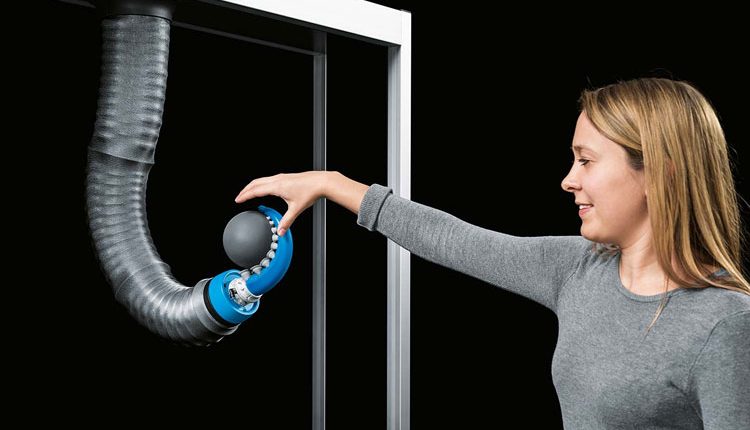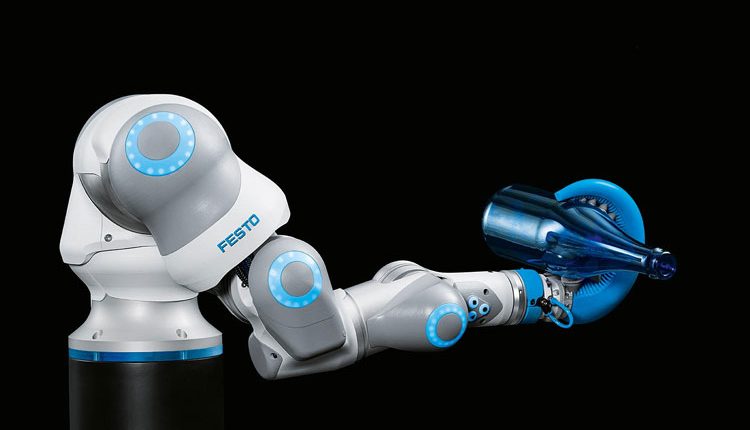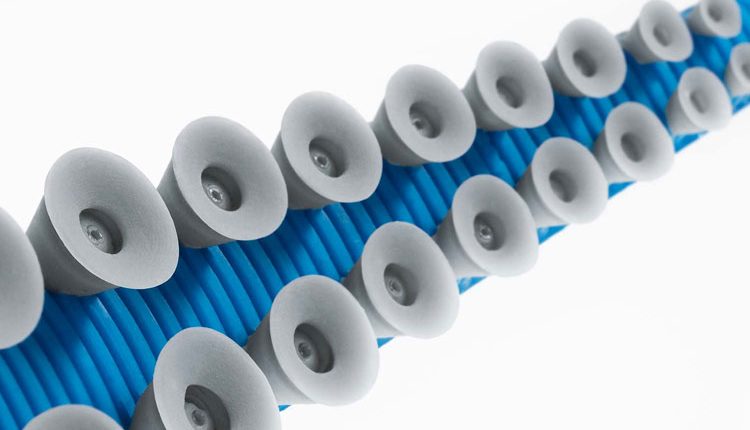The octopus has no skeleton and is made almost entirely of soft muscle, it is also extremely flexible and maneuverable. This not only means it can swim agilely in all directions, but also grip a wide range of objects in a form-fitting manner. The OctopusGripper now takes makes this phenomenon its own.
Unique combination of force fitting and vacuum
The gripper consists of a soft silicone structure, which can be pneumatically controlled. If compressed air is applied to it, the tentacle bends inwards and can wrap around the respective item being gripped in a form-fitting and gentle manner.
Just as with its natural model, two rows of suction cups are arranged on the inside of the silicone tentacle. Whilst the small suction cups on the end of the gripper work passively, a vacuum can be applied to the larger suction cups, by means of which the object adheres securely to the gripper. This means that the OctopusGripper can pick up and hold a variety of different shapes.
Potential uses in safe human-robot collaboration
Thanks to its soft material, the artificial tentacle is not only able to grip in a gentle and safe manner. It also fulfils the strict criteria of a soft robotics component and thus has great potential for collaborative working space of the future.
For this purpose, Festo is testing the gripper on two pneumatic lightweight robots at once, which were also developed in the Bionic Learning Network: the BionicMotionRobot and the BionicCobot. Both robots are thoroughly pliable and can be infinitely stiffened in terms of their kinematics. They can therefore interact directly with people. Even in the event of a collision, they are harmless and do not have to be shielded from the worker like conventional factory robots.




Comments are closed, but trackbacks and pingbacks are open.